
Console Gaming History Adventure: 1980
Today I’m ready to follow up on my 1979 article with 1980! This year brings us 45 new titles across 4 different consoles to try!
The world’s first third-party console games, developed and published by the newly-formed Activision, all for the Atari VCS, were released this year. Atari’s lawsuit against Activision began this year and wouldn’t conclude until 1982, but in the meantime, Activision seemed to able to continue making and selling games.
New Consoles
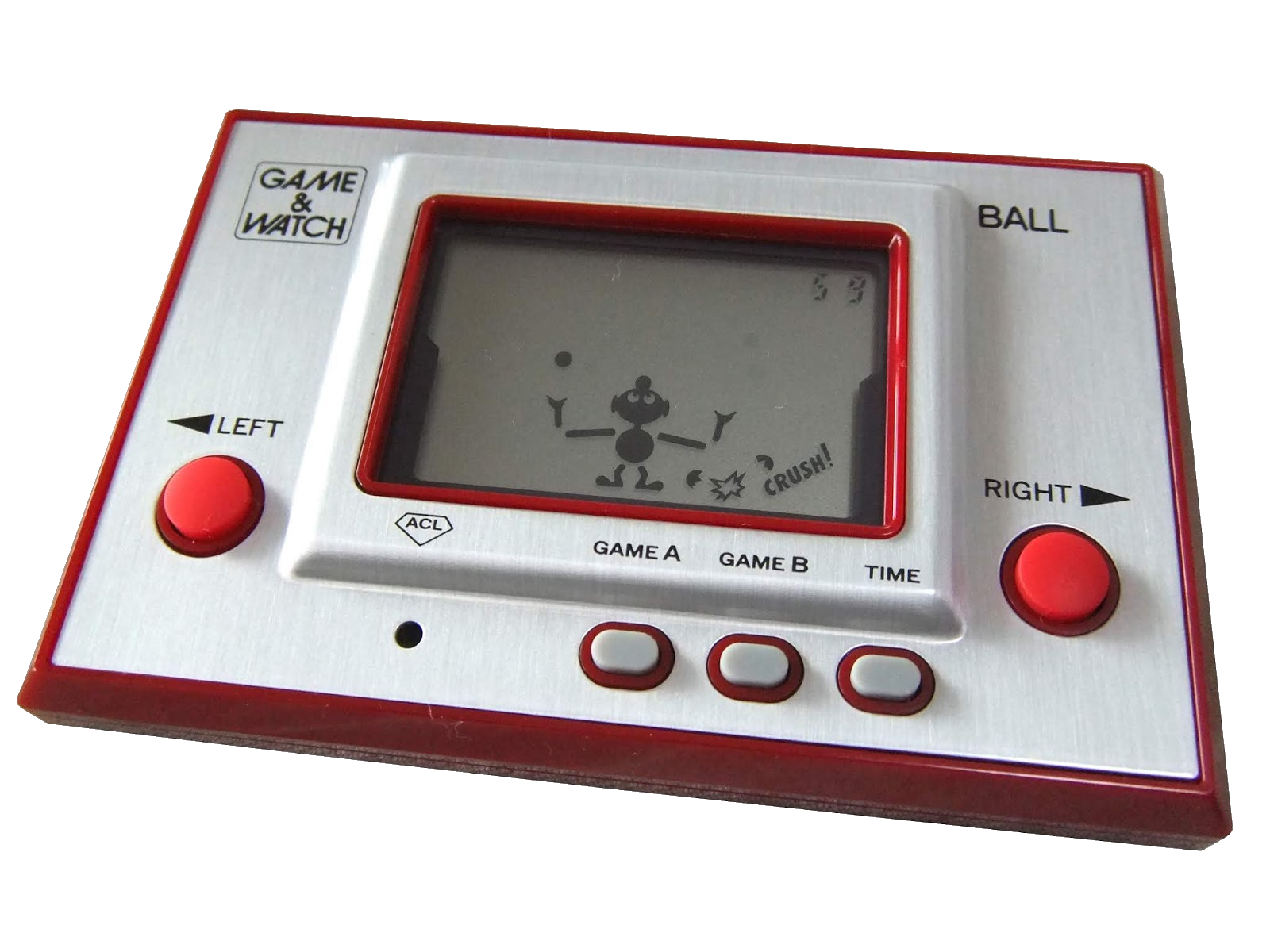 This is the year marks the beginning of the Nintendo Game & Watch. I was really torn about whether or not to involve this thing in my project at all! On one hand, it isn’t what I would personally consider a proper gaming console – portable or not – because it doesn’t take separate media to play a library of games. Instead, each Game & Watch game is built into its own dedicated, standalone device that exists just for the purpose of playing that one game. This is how Generation 1 consoles worked, including Nintendo’s own Color TV-Game series, and it’s why I skipped that generation. The Game & Watch series is for some reason considered part of generation 2, even though it works the same way. I want to talk about consoles as platforms that enable a whole ecosystem of games, focusing specifically on the games themselves. I didn’t set this up to talk about what are basically just electronic toys with screens!
This is the year marks the beginning of the Nintendo Game & Watch. I was really torn about whether or not to involve this thing in my project at all! On one hand, it isn’t what I would personally consider a proper gaming console – portable or not – because it doesn’t take separate media to play a library of games. Instead, each Game & Watch game is built into its own dedicated, standalone device that exists just for the purpose of playing that one game. This is how Generation 1 consoles worked, including Nintendo’s own Color TV-Game series, and it’s why I skipped that generation. The Game & Watch series is for some reason considered part of generation 2, even though it works the same way. I want to talk about consoles as platforms that enable a whole ecosystem of games, focusing specifically on the games themselves. I didn’t set this up to talk about what are basically just electronic toys with screens!
On the other hand, if I didn’t talk about the Game & Watch series as part of this project, people would complain that I skipped over something extremely important to the history of console gaming, and they’d be right! The 1982 “Donkey Kong” Game & Watch unit was history’s first example of a proper directional pad / d-pad. Nintendo would reuse this d-pad design in the controllers for their 1983 3rd-Gen console, the Famicom, and the design would be copied by countless competitors from there, remaining an integral part of game controllers and portable gaming consoles to this day. If that weren’t enough, the Game & Watch series has also become a big part of popular culture, including Nintendo themselves creating a playable character based on the same aesthetics called “Mr. Game & Watch” in their modern Super Smash Bros. series. Game & Watch games continued to be released regularly until 1986, and even after that there was a brief set of new games released from 2021 to 2022!
So what I’ve decided to do is a compromise where I’ve mentioned all this here, but I’m not actually planning to spotlight any Game & Watch games, even though I plan to play the ones I can access just like with the arcade games. With that duty complete, let’s go back to talking about gaming consoles with separate game libraries again, okay?
Returning Consoles
This is the year where the Intellivision went from being released in a few limited test locations to being made widely available across the USA, with international releases rolling out over the next few years. Along with the 6 titles you could have bought for it in 1979, 13 more Intellivision cartridges were released for 1980. Most of these games continue to suffer from the problem of being much too complicated, but I was still able to find two good ones to talk about this year!
The Magnavox Odyssey² didn’t have nearly as many games this year as it did last year, but it was only a temporary slump and from what I can tell, the console was doing okay, even if it was light years beneath the Atari VCS at this point.
The overwhelming majority of new games this year are for the Atari VCS, even if you don’t count the 6 third-party games Activision released for it.
The Bally Professional Arcade has no presence this year at all, but next year is where it finally comes back!
Noteworthy Games
I really noticed a significant improvement in the fun factor of the games released this year. Even though I raised my standards a bit for what to spotlight for this article – I feel I should expect more of the new decade after all – I still found no less than 8 different games to talk about!
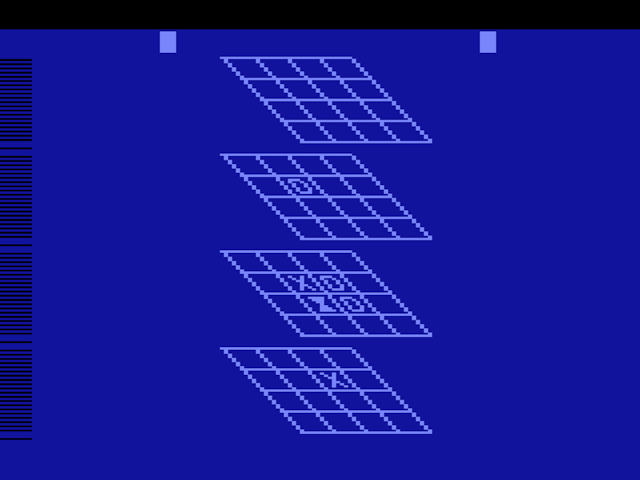 I’ve always hated Tic-Tac-Toe and I’ve never been able to figure out why it is so popular with humans. Once you understand the very basics, every game is guaranteed to end in a draw no matter what – it’s just so stupid! Tic-Tac-Toe was the basis for a lot of earlier games I’ve encountered with this project so far, and I did a lot of eye rolling as I ran into them. But 3-D Tic-Tac-Toe for the Atari VCS is different. By turning the game into something you play in a 4x4x4 3D grid, the game becomes complicated enough to become interesting! I guess this variant of Tic-Tac-Toe is called “Qubic”, and 3D Tic-Tac-Toe represents the first attempt to make a video game out of it. I found myself getting destroyed by even the easiest computer difficulty very quickly, but it was still a fun experience. If you have a friend to play with, 3D Tic-Tac-Toe also has multiplayer support!
I’ve always hated Tic-Tac-Toe and I’ve never been able to figure out why it is so popular with humans. Once you understand the very basics, every game is guaranteed to end in a draw no matter what – it’s just so stupid! Tic-Tac-Toe was the basis for a lot of earlier games I’ve encountered with this project so far, and I did a lot of eye rolling as I ran into them. But 3-D Tic-Tac-Toe for the Atari VCS is different. By turning the game into something you play in a 4x4x4 3D grid, the game becomes complicated enough to become interesting! I guess this variant of Tic-Tac-Toe is called “Qubic”, and 3D Tic-Tac-Toe represents the first attempt to make a video game out of it. I found myself getting destroyed by even the easiest computer difficulty very quickly, but it was still a fun experience. If you have a friend to play with, 3D Tic-Tac-Toe also has multiplayer support!
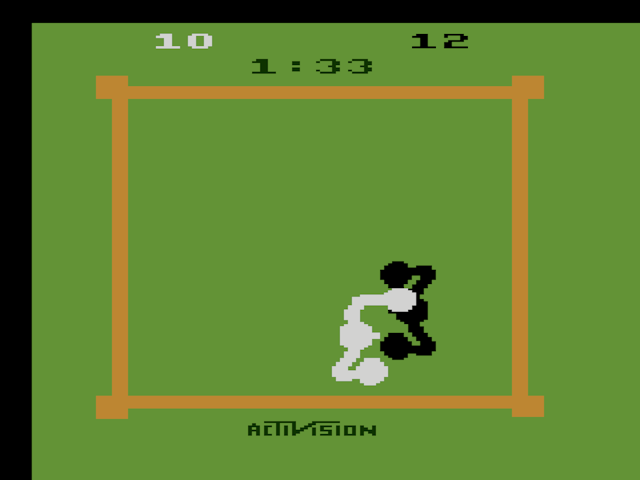 Like I said earlier: 1980 marks the beginning of 3rd party game development with Activision releasing its first batch of games. There were six games in total – all for the Atari VCS – and one of them was a boxing simulator simply titled Boxing. Now I really don’t care for boxing as a sport. It’s incredibly mean and causes cumulative brain damage in the human participants! But I’ve certainly done worse imaginary things in video games, and 1980’s Boxing for the Atari VCS is a lot better than the Boxing game for the APF M-1000/MP-1000 that I spotlighted last year! Basing the game around a birds-eye view gives you two dimensions to move around in, making things more interesting. The creator, Bob Whitehead, says in the included game manual that he intended the game to be simple enough to quickly pick up on and start playing, but still have discoverable complexity to it that would help keep it from becoming boring too quickly. I think he very much delivered!
Like I said earlier: 1980 marks the beginning of 3rd party game development with Activision releasing its first batch of games. There were six games in total – all for the Atari VCS – and one of them was a boxing simulator simply titled Boxing. Now I really don’t care for boxing as a sport. It’s incredibly mean and causes cumulative brain damage in the human participants! But I’ve certainly done worse imaginary things in video games, and 1980’s Boxing for the Atari VCS is a lot better than the Boxing game for the APF M-1000/MP-1000 that I spotlighted last year! Basing the game around a birds-eye view gives you two dimensions to move around in, making things more interesting. The creator, Bob Whitehead, says in the included game manual that he intended the game to be simple enough to quickly pick up on and start playing, but still have discoverable complexity to it that would help keep it from becoming boring too quickly. I think he very much delivered!
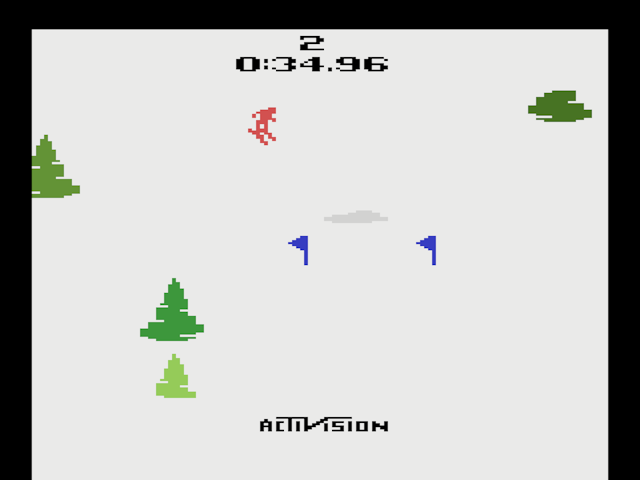 Another example of the above-par excellence of Activision’s third party titles is Skiing, also for the Atari VCS. The graphics are a lot nicer than what I’d come to expect from Atari VCS games at this point, and the gameplay is easy to pick up on, smooth, and fun. There are two different modes you can play: “Downhill”, where you just try to get to the bottom of the course as quickly as possible, and “Slalom”, where you try to get to the end of the course without missing two many flag gates. Each mode has 4 different levels of different difficulty ratings you can choose from, plus a random level generator for when you get bored of the premade levels! The difficulty switches on the console let you change whether you have to manually jump over moguls (bumps in the snow) to avoid crashing, or whether the computer will do that for you automatically.
Another example of the above-par excellence of Activision’s third party titles is Skiing, also for the Atari VCS. The graphics are a lot nicer than what I’d come to expect from Atari VCS games at this point, and the gameplay is easy to pick up on, smooth, and fun. There are two different modes you can play: “Downhill”, where you just try to get to the bottom of the course as quickly as possible, and “Slalom”, where you try to get to the end of the course without missing two many flag gates. Each mode has 4 different levels of different difficulty ratings you can choose from, plus a random level generator for when you get bored of the premade levels! The difficulty switches on the console let you change whether you have to manually jump over moguls (bumps in the snow) to avoid crashing, or whether the computer will do that for you automatically.
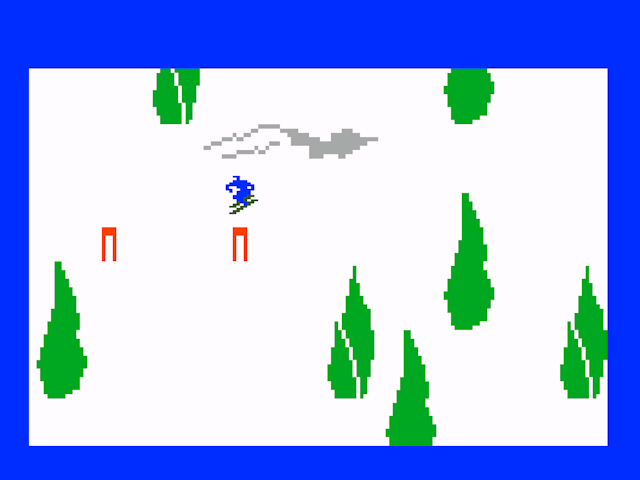 Eerily similar to Activision’s ski simulator is U.S. Ski Team Skiing for the Intellivision. The graphics look almost identical, though like most Intellivision games, you can see slightly more detail and a greater diversity of color. Also like most Intellivision games, it adds complexity in all the wrong places, bogging you down with options at the start of each run where you have to choose from both 4 different game speeds, as well as 15 (!!!) different levels of slope steepness. Meanwhile, unlike Atari’s incarnation, you only have two possible courses to choose from, with no random course generator. The first course is called “Downhill”, but it has slalom gates on it anyway. The second course is called “Slalom” and it’s the same concept as Downhill only much harder. Apparently, there was a more modern rerelease of the game that fixes this by adding more courses, though so far I have only played the version that was available in 1980. U.S. Ski Team Skiing for the Intellivision controls completely differently from Activision’s game, oriented around steering with the left and right sides of the disc instead of just choosing your direction like with Skiing by Activision. Both designs are their own form of fun to play with, so even though Activision’s rendition is clearly the better of the two, I recommend you give both a try!
Eerily similar to Activision’s ski simulator is U.S. Ski Team Skiing for the Intellivision. The graphics look almost identical, though like most Intellivision games, you can see slightly more detail and a greater diversity of color. Also like most Intellivision games, it adds complexity in all the wrong places, bogging you down with options at the start of each run where you have to choose from both 4 different game speeds, as well as 15 (!!!) different levels of slope steepness. Meanwhile, unlike Atari’s incarnation, you only have two possible courses to choose from, with no random course generator. The first course is called “Downhill”, but it has slalom gates on it anyway. The second course is called “Slalom” and it’s the same concept as Downhill only much harder. Apparently, there was a more modern rerelease of the game that fixes this by adding more courses, though so far I have only played the version that was available in 1980. U.S. Ski Team Skiing for the Intellivision controls completely differently from Activision’s game, oriented around steering with the left and right sides of the disc instead of just choosing your direction like with Skiing by Activision. Both designs are their own form of fun to play with, so even though Activision’s rendition is clearly the better of the two, I recommend you give both a try!
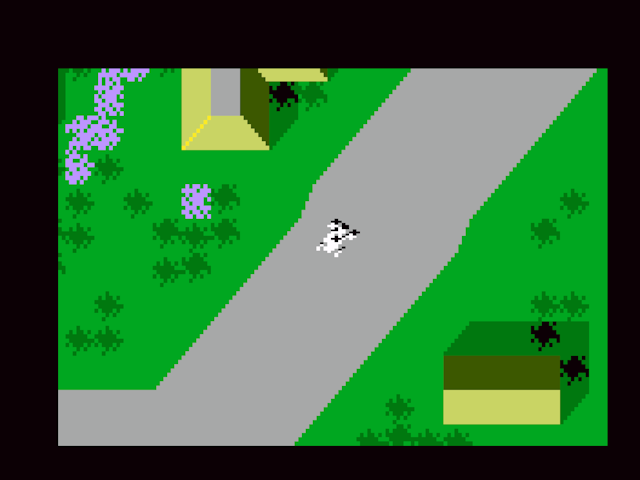 Another Intellivision game that isn’t overly complicated to learn to play is Auto Racing. I’ve always liked running time trials on more modern racing games because I find it weirdly relaxing to do, and I’m pleased to find that such an old, early, racing game pioneer can still offer me a similar feeling. You have 5 different tracks to choose from, with 1 being the simplest and 5 being the hardest, and can decline to choose a track to have track 1, 2, 3, or 4 randomly selected. You also have 5 different car colors to choose from. Each car has different stats, though the tan and blue cars have the same stats so you have a way to play multiplayer with equal stats. I don’t have anyone to play multiplayer with, but I hear it’s not the greatest because of what they have to do to compensate for the fact that both cars can’t fit on the screen if one falls behind. 😕 But single player mode is nice! The lack of modern conventions to conform to means that steering doesn’t work quite how you’d expect – you have to press the disc towards you as well as left/right to turn more sharply, while trying to avoid overdoing and spinning out. It takes a bit of getting used to but feels pretty natural after a few minutes of practice.
Another Intellivision game that isn’t overly complicated to learn to play is Auto Racing. I’ve always liked running time trials on more modern racing games because I find it weirdly relaxing to do, and I’m pleased to find that such an old, early, racing game pioneer can still offer me a similar feeling. You have 5 different tracks to choose from, with 1 being the simplest and 5 being the hardest, and can decline to choose a track to have track 1, 2, 3, or 4 randomly selected. You also have 5 different car colors to choose from. Each car has different stats, though the tan and blue cars have the same stats so you have a way to play multiplayer with equal stats. I don’t have anyone to play multiplayer with, but I hear it’s not the greatest because of what they have to do to compensate for the fact that both cars can’t fit on the screen if one falls behind. 😕 But single player mode is nice! The lack of modern conventions to conform to means that steering doesn’t work quite how you’d expect – you have to press the disc towards you as well as left/right to turn more sharply, while trying to avoid overdoing and spinning out. It takes a bit of getting used to but feels pretty natural after a few minutes of practice.
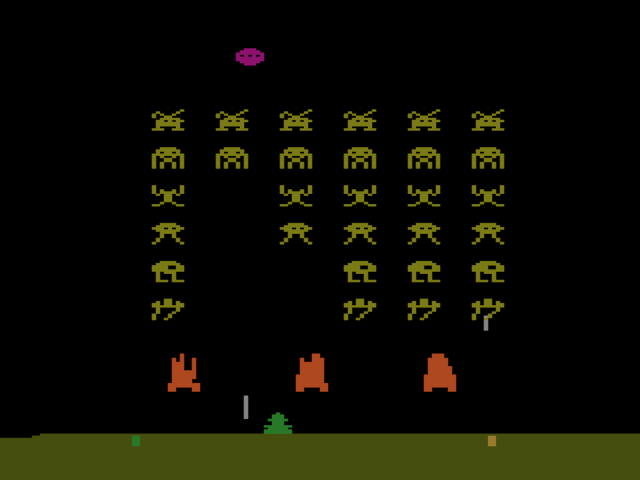 One game that absolutely can’t go unmentioned is Space Invaders. for the Atari VCS because of its historical significance. Naturally, it can’t be as good as the original arcade version because of the hardware limitations of the VCS, but it handles these limitations very elegantly. There are fewer aliens on the screen to shoot, but this is balanced out by having a lot less time to shoot them, and the game translates surprisingly well. To make up for the degraded experience, the programmer even added some interesting optional game variations including wavy enemy laser beams, invisible enemies, and a bunch of different multiplayer experiences you can try out with a friend! It was a very big deal back then because it gave people the ability to play a screamingly popular game at home without having to take a trip to an arcade and drop in quarters for the privilege. Space Invaders for the Atari VCS was considered the console’s “killer app” that cemented its dominance over the console market, also bringing the very idea of console gaming into the mainstream. I am hoping it will lead to more attention being put into the home console games for my project going forward, but I guess we’ll have to see.
One game that absolutely can’t go unmentioned is Space Invaders. for the Atari VCS because of its historical significance. Naturally, it can’t be as good as the original arcade version because of the hardware limitations of the VCS, but it handles these limitations very elegantly. There are fewer aliens on the screen to shoot, but this is balanced out by having a lot less time to shoot them, and the game translates surprisingly well. To make up for the degraded experience, the programmer even added some interesting optional game variations including wavy enemy laser beams, invisible enemies, and a bunch of different multiplayer experiences you can try out with a friend! It was a very big deal back then because it gave people the ability to play a screamingly popular game at home without having to take a trip to an arcade and drop in quarters for the privilege. Space Invaders for the Atari VCS was considered the console’s “killer app” that cemented its dominance over the console market, also bringing the very idea of console gaming into the mainstream. I am hoping it will lead to more attention being put into the home console games for my project going forward, but I guess we’ll have to see.
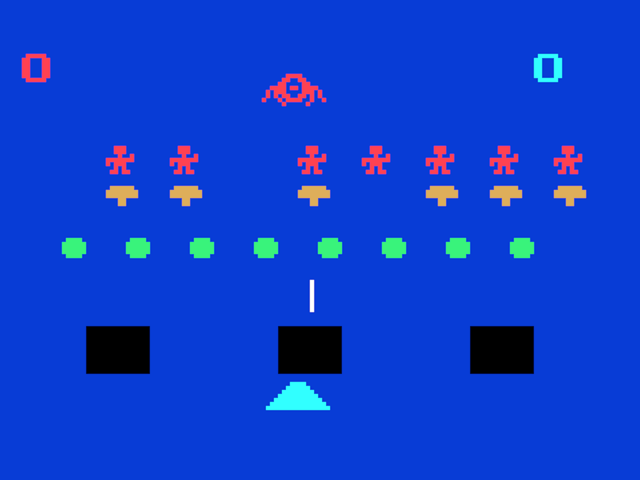 At first glance, Alien Invaders – Plus! for the Odyssey² looks like another home console port of Space Invaders but it actually plays very differently! The shields are indestructible, but instead of dying when you get hit by an enemy laser beam, you become a helpless pedestrian, and have to sacrifice one of the shields to turn it into a new armored gun to shoot with before the enemies can hit you again! The only actual enemies are in red – the red cycloptic monster that constantly pesters you and respawns soon after you kill it, and the single row of little red guys. The yellow mushroom things below them are actually the guns they use to shoot – destroy either the gun or the red guy behind it and the bullets stop firing, though you still need to destroy all the red guys to win the round. The green dots are shields that can’t be destroyed and just serve as an obstacle where you have to use the right timing to get your missiles to go past them. I found this to be a really fun and interesting take on the by now very tired Space Invaders concept. My only complaint is that when you are completely out of guns and the situation has become totally hopeless, the game doesn’t end like it should, forcing you to struggle to “catch” a laser beam with your little guy to get him killed in order to proceed to the next round, which is really annoying. 🫤
At first glance, Alien Invaders – Plus! for the Odyssey² looks like another home console port of Space Invaders but it actually plays very differently! The shields are indestructible, but instead of dying when you get hit by an enemy laser beam, you become a helpless pedestrian, and have to sacrifice one of the shields to turn it into a new armored gun to shoot with before the enemies can hit you again! The only actual enemies are in red – the red cycloptic monster that constantly pesters you and respawns soon after you kill it, and the single row of little red guys. The yellow mushroom things below them are actually the guns they use to shoot – destroy either the gun or the red guy behind it and the bullets stop firing, though you still need to destroy all the red guys to win the round. The green dots are shields that can’t be destroyed and just serve as an obstacle where you have to use the right timing to get your missiles to go past them. I found this to be a really fun and interesting take on the by now very tired Space Invaders concept. My only complaint is that when you are completely out of guns and the situation has become totally hopeless, the game doesn’t end like it should, forcing you to struggle to “catch” a laser beam with your little guy to get him killed in order to proceed to the next round, which is really annoying. 🫤
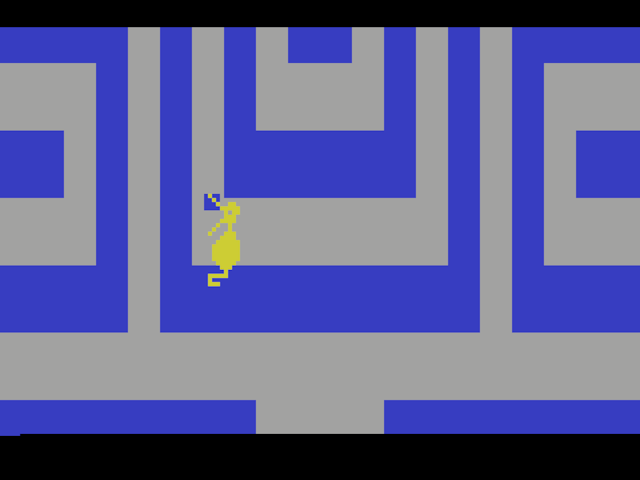 In my personal opinion, the most interesting contribution to 1980 was Atari’s Adventure for the Atari VCS. Like the Superman game we talked about for last year, Adventure is an anachronistic title for the time because it’s actually completable. The two games are actually based off the same code. The developer, Warren Robinett, was working on a fantasy adventure game, and got pressure from his boss to turn it into a Superman game instead as a marketing movie tie-in. Another developer (John Dunn) offered to defuse the situation by taking a copy of Mr. Robinett’s incomplete game and turning it into Superman to make their bosses happy, leaving Mr. Robinett free to take his copy of the code and complete the game as he had originally intended it to be. You can clearly see the relationship between the two games in the way you can travel from screen to screen in a non-linear, open world environment, and in the way you can pick up objects and carry them around to accomplish things. Adventure though is a lot more challenging, complex, and in my opinion, a much more interesting game, even if the graphics are even worse than Superman – your player character is literally just a big pixel!
In my personal opinion, the most interesting contribution to 1980 was Atari’s Adventure for the Atari VCS. Like the Superman game we talked about for last year, Adventure is an anachronistic title for the time because it’s actually completable. The two games are actually based off the same code. The developer, Warren Robinett, was working on a fantasy adventure game, and got pressure from his boss to turn it into a Superman game instead as a marketing movie tie-in. Another developer (John Dunn) offered to defuse the situation by taking a copy of Mr. Robinett’s incomplete game and turning it into Superman to make their bosses happy, leaving Mr. Robinett free to take his copy of the code and complete the game as he had originally intended it to be. You can clearly see the relationship between the two games in the way you can travel from screen to screen in a non-linear, open world environment, and in the way you can pick up objects and carry them around to accomplish things. Adventure though is a lot more challenging, complex, and in my opinion, a much more interesting game, even if the graphics are even worse than Superman – your player character is literally just a big pixel!
Adventure is particularly famous for containing the world’s first software easter egg hidden away in the game code. At the time, Atari refused to give its developers any credit for creating its games, which was one of the main reasons why Atari lost its four best developers to the founding of Activision. Mr. Robinett was frustrated by this, and so he snuck a hidden room into the game that included his name. Atari didn’t find out about this until the game had already been copied onto thousands of cartridges and sold everywhere, and by then, Mr. Robinett had already left the company. 🫡
Meanwhile in Arcade Land…
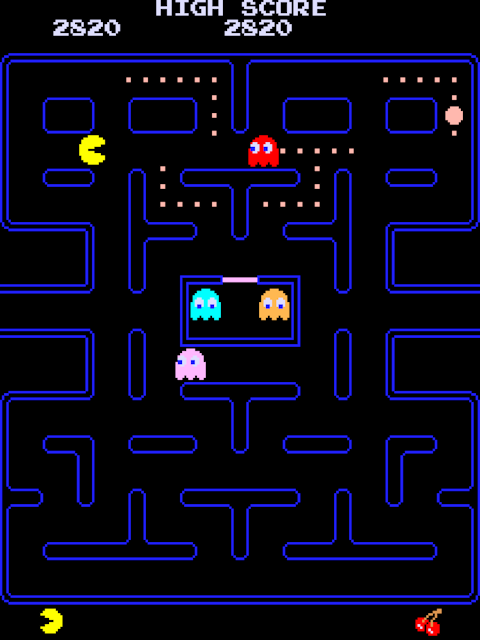 While the home console gaming situation seems to have visibly improved for 1980, arcades continued to be where it was at for gamers. Compared to the 45 home console games I had to go through for this year, I had over 100 arcade games to do the same with. 😐 Maybe the home release of Space Invaders for the Atari VCS will change the situation for 1981. I guess we’ll see.
While the home console gaming situation seems to have visibly improved for 1980, arcades continued to be where it was at for gamers. Compared to the 45 home console games I had to go through for this year, I had over 100 arcade games to do the same with. 😐 Maybe the home release of Space Invaders for the Atari VCS will change the situation for 1981. I guess we’ll see.
While there were a number of arcade games I really liked that I could have spotlighted for this year, I feel like I really have no choice but to hand that award to what is easily the most famous 1980 release and possibly the most famous arcade game of all time, Pac-Man. Similar to Sega’s “Head On” arcade game from last year, your player character navigates a maze in order to collect dots while avoiding enemies. The enemies are these cute little ghosts, each with their own color and programmed pattern of behavior. Pac-Man’s creator, Tōru Iwatani, wanted to create a game that had nothing to do with sports, cars, or violence, in an attempt to bring more women into arcades. Instead, he decided to make Pac-Man all about eating after he observed just how much women like to eat. This kind of nonsense is why I think global human society would be better off without a concept of gender at all, but I digress. 😣
Being the demon I am, I’m going to utter a blasphemy here and say that I actually don’t like this game very much. It’s wayy too hard and it’s normally impossible to get anywhere without learning to manipulate and anticipate the AI behavior of the ghosts, which I find too mentally taxing for me, and I’d likely be bogged down by the tedium of it even if I could manage. If you just play the game straight it doesn’t take long before the ghosts inevitably head you off and defeat you.
Even I can’t deny though just how historically important Pac-Man is to video game history, both in the gameplay innovations it brought to the table and in how it enhanced the artistic merit of games in general. Pac-Man was the industry’s first named video game character, which heralded an age where games became less about simulating reality and more about having their own unique form of style and creativity. The game was also the first to feature cutscenes, which appear every few levels.
Lots of the sources I found on the game like to place a lot of emphasis on how the game was initially called “Puck Man” when it was first released in Japan because it sounds cool and interesting. Even with the borrowed human last name “Murasaki” (which means “Purple”), I’m not a Japanese speaker, but I’m pretty sure both “Pac-Man” and “Puck Man” would be pronounced exactly the same when distilled down to Japanese phonetics (『パックマン』/ “pakkuman”), so to me, it sounds more like an initial Roman spelling inconsistency instead of an actual alternative name for the character. I guess the name comes from the Japanese phrase 『パクパク』 (“paku paku“), which means to wolf/scarf something down. Either way, “Pac-Man” quickly became the name and Roman spelling used for the character in all countries.
Conclusion
I found 1980 to be a particularly lengthy year to get through, and there’s nearly twice the number of games to go through for 1981! At the same time, I find each year to be more fun than the last. I absolutely intend to finish 1981, but it will probably take me a lot longer than 1980 did. Stay tuned!